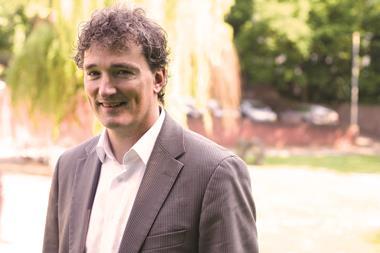UK - Officials at the UK's second-largest pension fund, the Universities Superannuation Scheme, are planning to alter the asset allocation to make alternatives worth up to 30% of the total portfolio.
Speaking at the European Pensions Funds Congress in Frankfurt today, Peter Moon, chief investment officer at the "less than £29bn" (€34.4bn) scheme, told delegates the fund currently has an asset allocation target of 20% but will is looking to improve potential returns and diversification.
"We currently have 20% of the fund in alternatives, and results are likely to show a lot of [pension funds'] alternatives will be in alternatives beta. We will probably move a higher proportion further into alternative assets," said Moon.
More specifically, Moon told IPE: "We have 8% invested in alternatives but a lot is uncommitted which takes us above 20%. Our ALM is to deliver 20% minimum to prevent diversification impact and give equity-type returns. But it would not be surprising if we move to 30%."
The universities' scheme can take what might be seen by some pension funds as a greater risk than those open to the maturer pension funds because it is relatively young in membership - albeit rising by 3-4% a year - and has annual cash flow of £1.25bn to invest.
That said, Moon said he believes moving further into alternatives is not necessarily increasing the scheme's risk profile by making changes to its asset allocation strategy.
"We have 3% of assets under management to invest for the next 30-40 years, and we have been risk-loving, able to take on risky assets. At least 90% [of assets] are risk assets, 10% are matching assets, so this decline in the markets has certainly caused a little bit of consternation," said USS' chief investment officer.
"We are at an advantage as we have a free cash flow of £1.25bn a year, so we can behave differently to other schemes. But if equity income [from dividends] halves, as I fear it could, we would not be able to increase our alternatives allocation as quickly. It will be a slow process because we have to look at equity income and if you look at the movements of equity income against equity falls, they do eventually come together," added Moon.
As well as considering the asset allocation strategy of the giant scheme, USS officials and trustees, as well as consultants, have also been reviewing the future payout and benefits options though no changes are likely in the short-term.
"We have been looking at ways of extending the retirement age, looked at career averaging benefits, looked at reducing benefits. There is a bit of difficulty, especially as it comes from a government base, in considering this, as no-one likes to have these benefits reduced and there are processes to go through to consider it.
"A number of different studies are being conducted, one by Hewitt, another by the trustees, and we always do a series of studies at the actuarial valuation time, looking at the costs and benefits of actions the board can take. This is part of normal good governance," Moon told IPE.
"But [the trustees] are aware they are not going to get the returns they have had in the past, they have enjoyed a purple patch. That means they will have to price everything very carefully going forward, and discuss the options with employers and employees.
"[Pension funds] must be really honest with our members on what we are able to provide as a realistic promise in retirement. The goalposts have shifted and the industry has made a rod for its own back by not doing so," he continued.
Commenting on the state of the markets, he was also critical and concerned about the manner in which the financial system has developed and what it may now need to improve economic and financial conditions.
"September was the first time I thought I was staring at a systemic failure of the system and that was worrying," said Moon.
"We are in this situation not because of irrational exuberance as has been suggested but because credit levels were at such a low level and people were able to get such cheap credit it enabled people to get enhanced returns. Now what we have is the opposite. The pricing uncertainty is likely to continue for some considerable time. I had never imagined in my mind we would have an economy running on one sector, the banking sector, which turned off the taps and affected every other sector.
"The authorities were correct to try to stabilise the position. But the amount proposed by the US government - $700m - is not enough. It is going to take another $2trn in another two years, then another $2trn in another two years," he suggested.
If you have any comments you would like to add to this or any other story, contact Julie Henderson on + 44 (0)20 7261 4602 or email julie.henderson@ipe.com












No comments yet